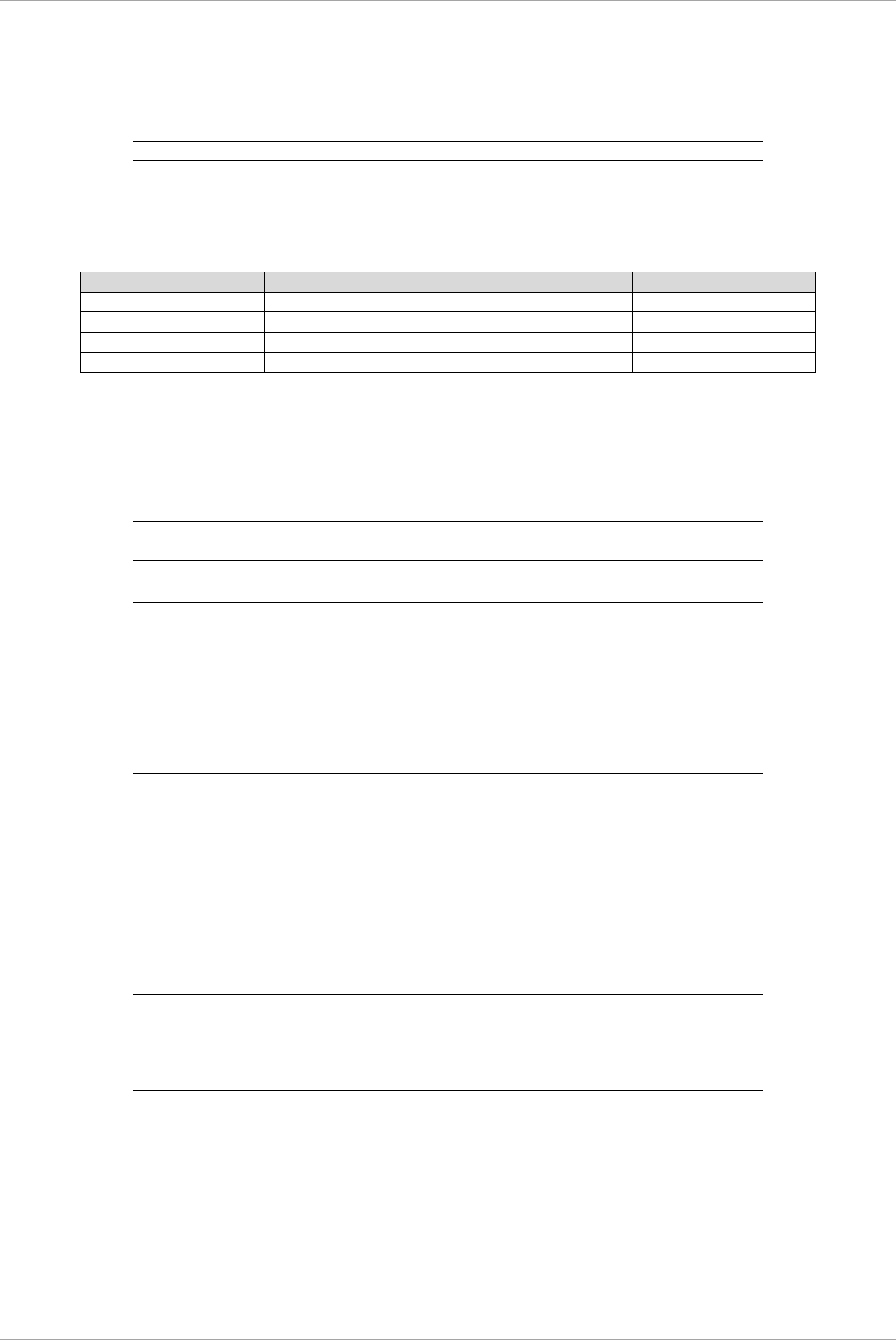
CHAPTER 4 PCI Card Hot Maintenance in Red Hat Enterprise Linux 6
4.5 IOU hot remove
77
C122-E175-01EN
Execute “ethtool -p” command, making the LED of NIC blinked. Check IOU or PCI_box connected to the
IOU, checking in which slots the NIC is mounted, (e.g. PCI#0)
Example: Blinking the LED of the NIC corresponding to interface “eth0” for ten seconds.
# /sbin/ethtool p eth0 10
2. Make a table with information including interface name, hardware address and PCI bus address of NIC
mounted on IOU to be replaced.
Make a below table with information of IOU to be replaced within information which is got by step 1.
TABLE 4.4 Correspondence between bus addresses and interface names
Interface name
Hardware address
Bus address
Location
eth0
0000:89:01.0
Onboard 0
eth1
0000:89:01.1
Onboard 1
eth2
0000:8f:00.0
PCI#0
...
...
...
Note
When recording a bus address, include the function number (number after the period).
- Confirm the correspondence between the interface name and hardware address
Execute below command, checking the correspondence between the interface name and the
hardware address.
Example: eth0 for a single interface
# cat /sys/class/net/eth0/address
2c:d4:44:f1:44:f0
Example: eth0 for a bonding interface
# cat /proc/net/bonding/bondY
Ethernet Channel Bonding Driver .........
.
.
Slave interface: eth0
.
Permanent HW addr: 2c:d4:44:f1:44:f0
.
.
You can use this procedure only when the bonding device is active. If the bonding device is not active
or the slave has not been incorporated, use the same procedure as for a single interface.
Also, the correspondence between the interface name and hardware address is automatically
registered by the system in the udev function rule file, /etc/udev/rules.d/70-persistent-net.rules.
Confirm that the ATTR{address} and NAME items have the same definitions as in the above output.
Example: eth0
grep eth0 /etc/udev/rules.d/70-persistent-net.rules
SUBSYSTEM=="net", ACTION=="add", DRIVERS=="?*", ¥
ATTR{address}=="2c:d4:44:f1:44:f0", ATTR{type}=="1", ¥
KERNEL=="eth*", NAME="eth0"
The ¥ at the end of a line indicates that there is no line feed.
You can always obtain the correct hardware address from the description in etc/udev/rules.d/70-
persistent-net.rules regardless of whether the interface is incorporated in bonding.
Confirm the hardware address of other interfaces by repeating the operation with the same command.
The following table lists examples of descriptions.


















